Premium Only Content
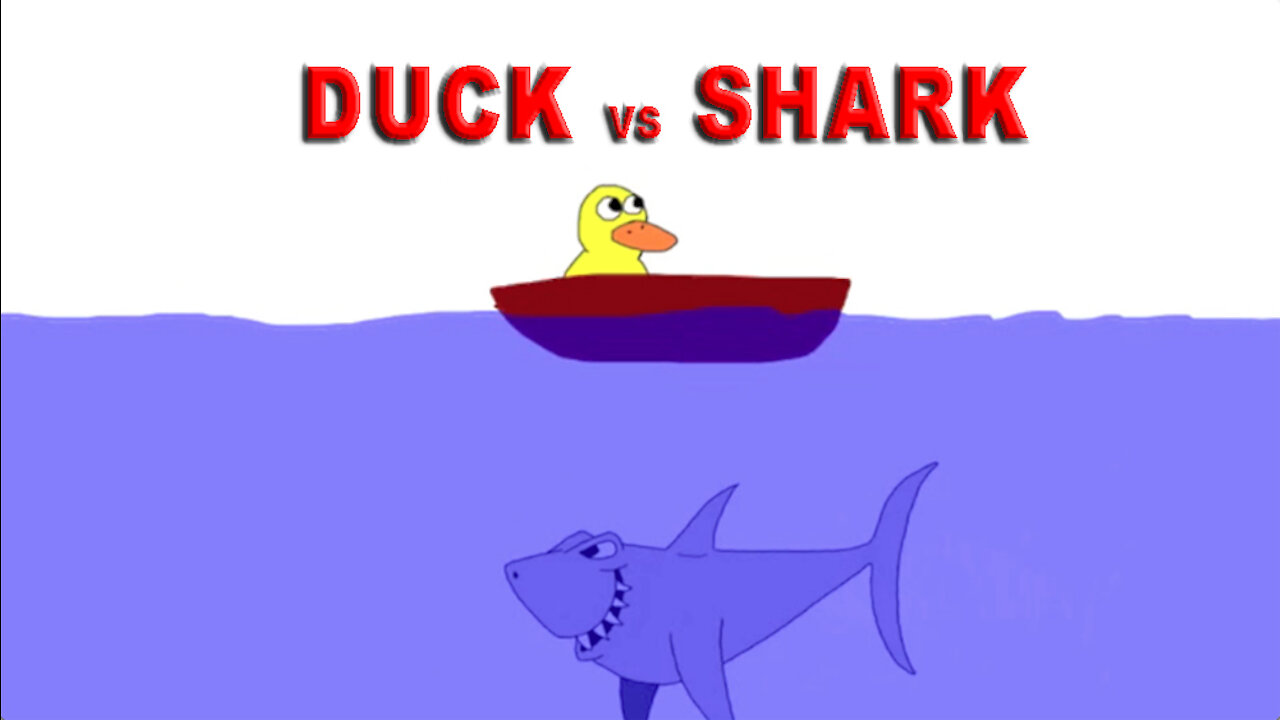
Duck vs Shark
This is a promo animation video I made back when I put my "SharkShank Redemption" iPad game on The App Store.
Evolutionary history:
Photo of dozens of yellowish fossilized teeth, the teeth are of various sizes and are spread out randomly on a flat black surface.
A collection of Cretaceous shark teeth
See also: Evolution of fish
Evidence for the existence of sharks dates from the Ordovician period, 450–420 million years ago, before land vertebrates existed and before a variety of plants had colonized the continents.[2] Only scales have been recovered from the first sharks and not all paleontologists agree that these are from true sharks, suspecting that these scales are actually those of thelodont agnathans.[11] The oldest generally accepted shark scales are from about 420 million years ago, in the Silurian period.[11] The first sharks looked very different from modern sharks.[12] At this time the most common shark tooth is the cladodont, a style of thin tooth with three tines like a trident, apparently to help catch fish. The majority of modern sharks can be traced back to around 100 million years ago.[13] Most fossils are of teeth, often in large numbers. Partial skeletons and even complete fossilized remains have been discovered. Estimates suggest that sharks grow tens of thousands of teeth over a lifetime, which explains the abundant fossils. The teeth consist of easily fossilized calcium phosphate, an apatite. When a shark dies, the decomposing skeleton breaks up, scattering the apatite prisms. Preservation requires rapid burial in bottom sediments.
Among the most ancient and primitive sharks is Cladoselache, from about 370 million years ago,[12] which has been found within Paleozoic strata in Ohio, Kentucky, and Tennessee. At that point in Earth's history these rocks made up the soft bottom sediments of a large, shallow ocean, which stretched across much of North America. Cladoselache was only about 1 metre (3.3 ft) long with stiff triangular fins and slender jaws.[12] Its teeth had several pointed cusps, which wore down from use. From the small number of teeth found together, it is most likely that Cladoselache did not replace its teeth as regularly as modern sharks. Its caudal fins had a similar shape to the great white sharks and the pelagic shortfin and longfin makos. The presence of whole fish arranged tail-first in their stomachs suggest that they were fast swimmers with great agility.
Most fossil sharks from about 300 to 150 million years ago can be assigned to one of two groups. The Xenacanthida was almost exclusive to freshwater environments.[14][15] By the time this group became extinct about 220 million years ago, they had spread worldwide. The other group, the hybodonts, appeared about 320 million years ago and lived mostly in the oceans, but also in freshwater.[citation needed] The results of a 2014 study of the gill structure of an unusually well preserved 325-million-year-old fossil suggested that sharks are not "living fossils", but rather have evolved more extensively than previously thought over the hundreds of millions of years they have been around.[16]
Drawing comparing sizes of Megalodon, great white shark and a man, Megalodon is 18m long and great white 6m.
Megalodon (top two, estimated maximum and conservative sizes) with the whale shark, great white shark, and a human for scale
Modern sharks began to appear about 100 million years ago.[13] Fossil mackerel shark teeth date to the Early Cretaceous. One of the most recently evolved families is the hammerhead shark (family Sphyrnidae), which emerged in the Eocene.[17] The oldest white shark teeth date from 60 to 66 million years ago, around the time of the extinction of the dinosaurs. In early white shark evolution there are at least two lineages: one lineage is of white sharks with coarsely serrated teeth and it probably gave rise to the modern great white shark, and another lineage is of white sharks with finely serrated teeth. These sharks attained gigantic proportions and include the extinct megatoothed shark, C. megalodon. Like most extinct sharks, C. megalodon is also primarily known from its fossil teeth and vertebrae. This giant shark reached a total length (TL) of more than 16 metres (52 ft).[18][19] C. megalodon may have approached a maxima of 20.3 metres (67 ft) in total length and 103 metric tons (114 short tons) in mass.[20] Paleontological evidence suggests that this shark was an active predator of large cetaceans.
-
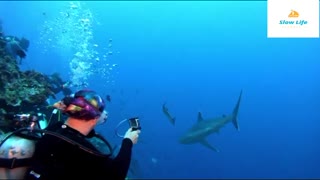 1:50
1:50
CNEWSfr
4 years agoshark diving
37 -
 0:15
0:15
kpoofishing
4 years agoLemon shark
57 -
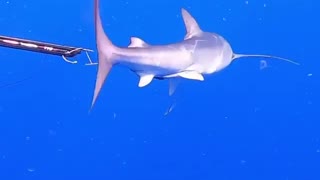 1:00
1:00
Urbonas
4 years agoSpearfisher VS shark !!!
18 -
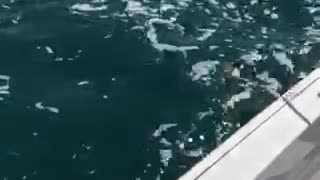 0:43
0:43
spulkrabek
4 years agoShark vs Fiji Frat Boy
51 -
 0:16
0:16
McLatro
4 years agoBig Nurse Shark
1851 -
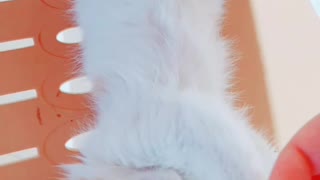 0:09
0:09
Nano22
4 years ago $0.01 earnedBaby shark kitten
1301 -
 0:45
0:45
coopski
4 years agoCooperski Catches a Shark
53 -
 0:08
0:08
LittleGuyRav4
4 years agoSnorkeling w/ Whale Shark
1241 -
 1:00
1:00
ViralHog
6 years agoFeeding a Wild Shark
43 -
 1:00
1:00
Urbonas
4 years agoSpearfishing sea shark
1211